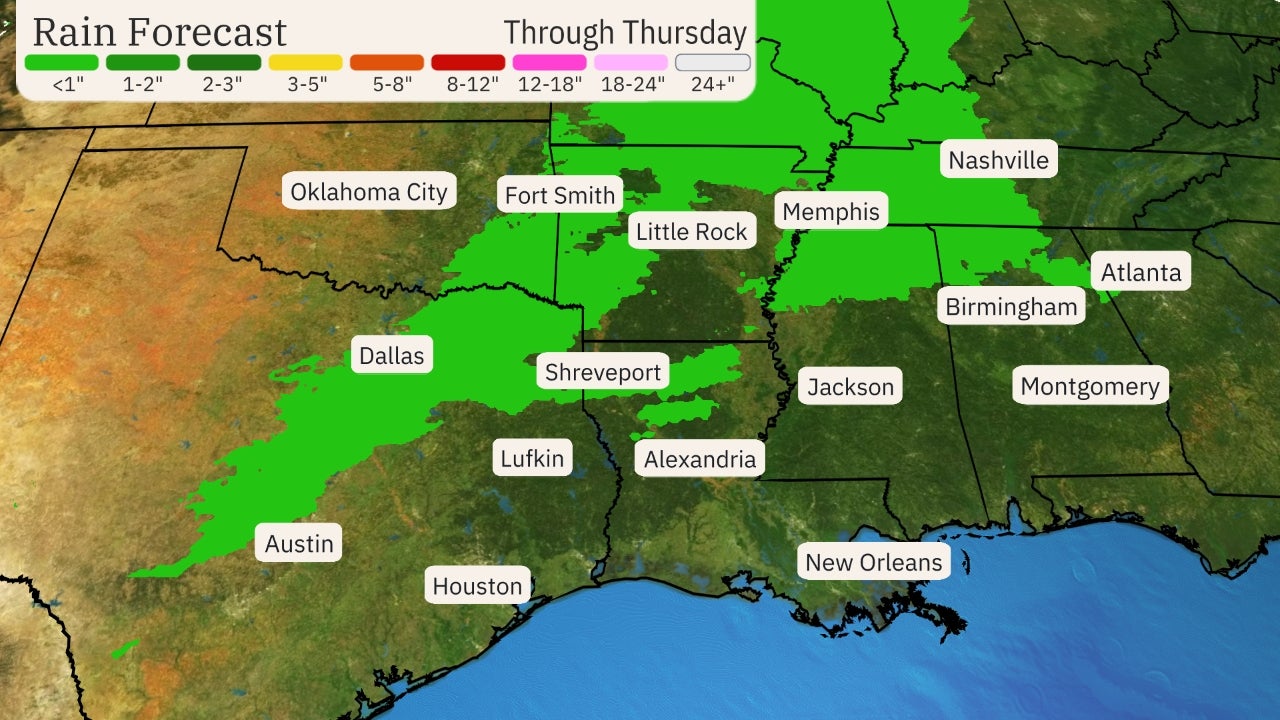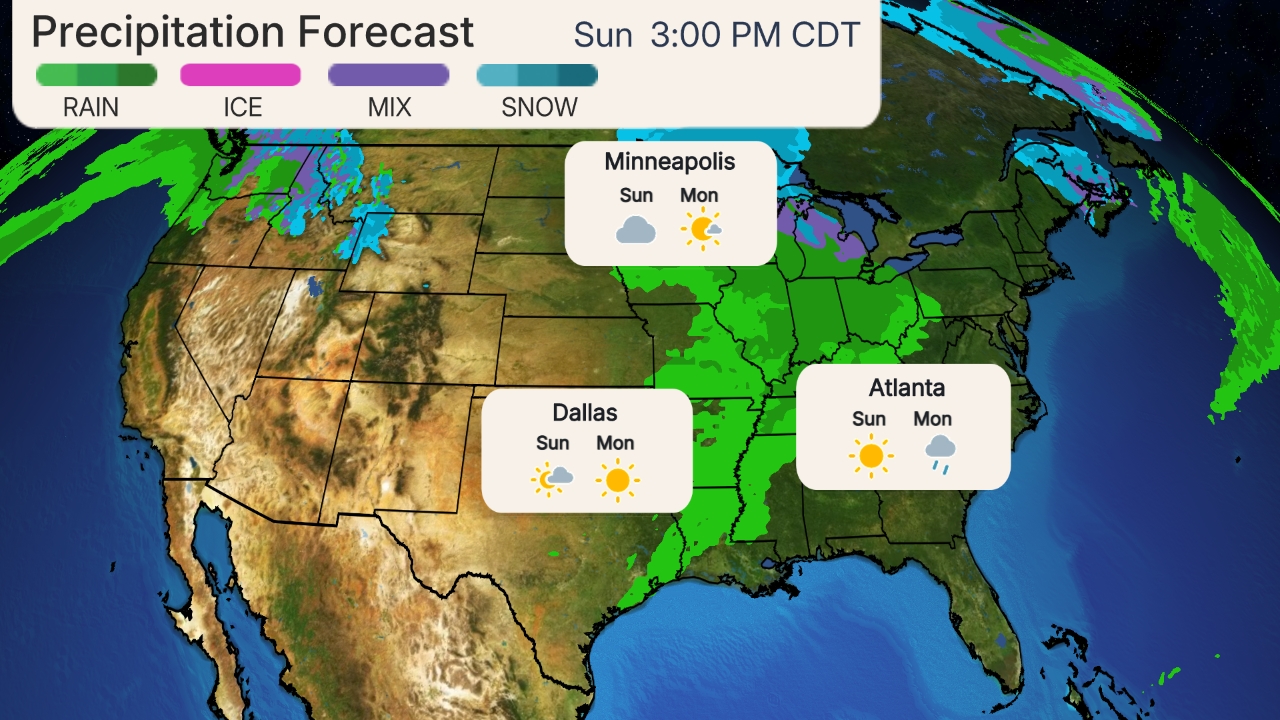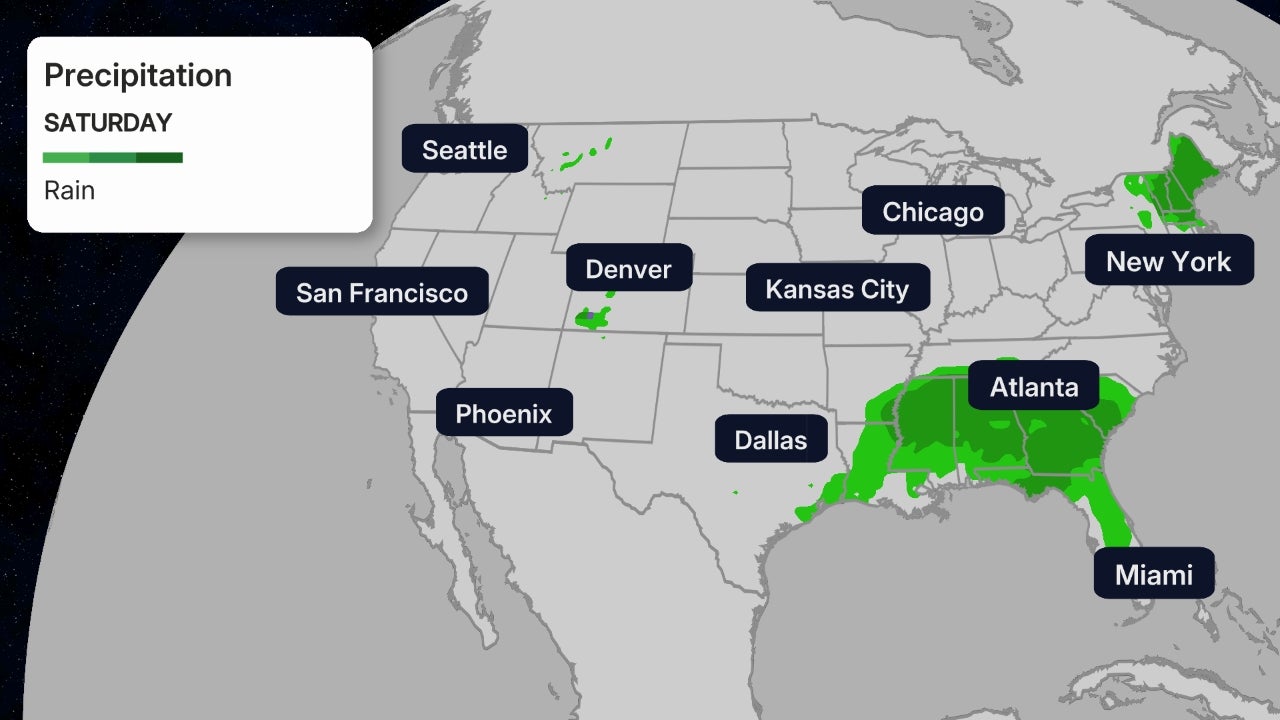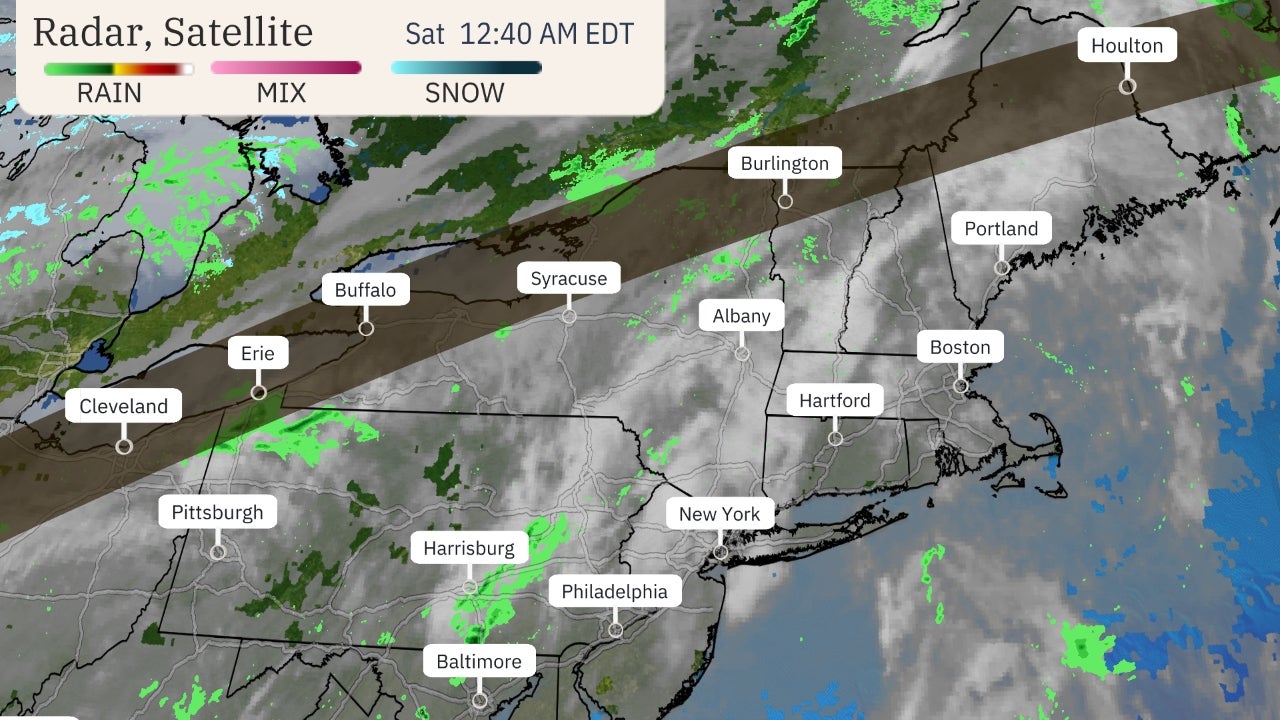By Jake Sojda, AccuWeather meteorologist
Updated Jan. 31, 2021 3:16 PM EST
A powerful nor'easter was taking shape along the mid-Atlantic coast Sunday. Forecasters say to "buckle up" as the developing winter storm will be a long-duration event for some areas and unload an AccuWeather Local StormMax™ of up to 36 inches. The system will lash parts of the Northeast into the middle of the week with a slew of different hazards.
Winter storm warnings and winter weather advisories were in effect across the Northeast as snow and ice began breaking out across the region Sunday.
"As a storm shifting through the Ohio Valley slowly moves east, a secondary storm will take shape along the Carolina coast later Sunday," explained AccuWeather Senior Meteorologist Danny Pydynowski.
"The coastal storm will then become the dominant storm of the two, strengthening into a full-blown nor'easter along the Atlantic coast."
As the two storms interact with one another, a broad area of snow will expand from the Ohio Valley through the Northeast.
"The two storms will pull a lot of moisture from the Atlantic across the region. With Arctic air still in place, this will lead to a broad swath of accumulating snow that will persist for days," explained AccuWeather Meteorologist Brett Rossio.
Some locations in the Ohio Valley and central Appalachians, where snow created slippery travel on Sunday, can expect rounds of snow to last all the way into Monday night. In much of the mid-Atlantic, the storm is forecast to extend from Sunday to Tuesday. Part of New England will face storm impacts from Monday to early Wednesday.
"This will allow for snowfall totals to really build up over large areas of the Northeast," Rossio explained. A large area of 6-12 inches of snow will stretch all the way from Ohio through the central Appalachians into New England.
"Even though the forecast is for nearly a foot of snow in some of these interior areas, it could be a little misleading in terms of what impacts to expect," AccuWeather Senior Meteorologist Kerry Schwindenhammer said. "With the gradual nature of the accumulation in many of these areas, clean-up crews may be able to 'keep up' in a relative sense."
CLICK HERE FOR THE FREE ACCUWEATHER APP
However, closer to the coast, forecasters warn it will be a much different story. "It will be very different near the coast," as this region is expected to get hammered by the heaviest snowfall, Schwindenhammer said.
Pydynowski compared the predicted storm impacts for inland areas to coastal locations to the fable of The Hare and the Tortoise. "Many areas farther inland will be like the tortoise, slowly but steadily building up impressive snowfall totals. Coastal areas will be like the hare, with impressive snowfall totals piling up very quickly. We'll see who ultimately wins the race and sees the highest report."
Accuweather meteorologists expect widespread snowfall totals of 12-18 inches where the heaviest snow falls. A bullseye of nearly 2 feet could target a small area just north and west of New York City, into the Pocono and Catskill mountains, with an AccuWeather Local StormMax™ of 36 inches.
The densely populated Interstate 95 corridor in the Northeast will be in the thick of the winter storm. Sunday morning snow was already spreading across the nation's capital, with slushy roads and slippery travel developing. Forecasters warn that in these areas, snow could become heavy and pile up very quickly.
Snow will continue to gradually spread northeastward through the mid-Atlantic and New England Sunday and Sunday night.
"Snow is expected to arrive in New York City this afternoon, but may take until after midnight until it really becomes steady," Pydynowski said. "Boston will start to get in on the action later Monday morning."
Snowfall rates will be much heavier near the coast, closer to the center of the powerful nor'easter. Snowfall rates could reach 1-2 inches per hour along the I-95 corridor from New Jersey through New England. There could also even be the chance for some thundersnow.
AccuWeather meteorologists expect New York City to see a major snowfall from this event, somewhere in the 10- to 15-inch range is likely. Boston will also see significant snowfall from the storm, about 6-12 inches, even if there is some mixing for a brief time.
Some milder air higher in the atmosphere could cause precipitation to change to a wintry mix, including sleet, then perhaps rain near the coast. This scenario is most likely near Cape Cod as well as along the southern mid-Atlantic coast.
"Much of the Jersey Shore, Long Island and New England coast should remain just cold enough at all levels of the atmosphere to stay all snow through the storm," Rossio said.
Farther south, more mild air will mix in as well, keeping snowfall totals a bit lower in places looking to erase a long-lasting snow drought. As of midday Sunday around an inch or 2 of snow has been reported in the Washington D.C. area. Another couple of inches are expected into Sunday evening before precipitation changes over to some light rain and drizzle.
In Philadelphia, a similar situation could unfold, although enough cold air is likely to hold on to result in more snow. "At least a few inches of snow is likely in the Philadelphia area Sunday afternoon and evening, before changing to a mix of sleet and perhaps some plain rain and drizzle for a time late Sunday night," explained AccuWeather Senior Meteorologist John Feerick
"However, it will change back to all snow late Monday morning or midday with a few more inches likely to come after that. There is a chance it could stay all snow through Sunday night, resulting in higher snowfall amounts."
Along with the significant snowfall, powerful winds will develop near the coast. Wind gusts of 30-50 mph, with an AccuWeather Local StormMax™ of 65 mph, will create blizzard conditions at times. Travel in areas from Trenton to New York City to Boston could become nearly impossible during the height of the storm from later Sunday night into Monday night.
The strong winds blowing onshore will also lead to some coastal flooding and beach erosion from the rough surf it will generate. Localized power outages will also be possible where the strongest gusts occur from any downed tree limbs or power lines.
As the storm reaches peak strength Tuesday just off of the New England coast, the heaviest snow will also begin to shift off into northern New England and Atlantic Canada. However, lingering areas of light-to-moderate snow will still plague the Northeast and the wind field will also expand.
With this interior areas of the Northeast will also start to get breezier. "Much of the snow that piles up in interior areas will not be accompanied by much wind Sunday and Monday," Rossio said. "However on Tuesday, areas all the way through the mid-Atlantic into the western Ohio Valley will see a gusty breeze develop."
This will prolong impacts from the storm in these parts by creating areas of blowing snow. "Much of the snow that falls across these areas will become light and fluffy by the end of the storm, so any wind will be able to blow it around pretty easily," Rossio added.
Travel delays along major thoroughfares like Interstates 90, 81, 80, 76 and 70 could be extended through Tuesday with blowing snow recovering plowed roads in open areas. Farther east in the mid-Atlantic and Northeast, some issues with blowing snow could persist all the way into Wednesday.
"It really won't be until Thursday, when high pressure briefly moves in ahead of the next storm forming in the central U.S., until folks in the Northeast will really be able to put a wrap on this nor'easter," Rossio said.
Keep checking back on AccuWeather.com and stay tuned to the AccuWeather Network on DirecTV, Frontier and Verizon Fios.
 Winter Weather Alerts
Winter Weather Alerts Current Radar
Current Radar Winter Storm Severity Index
Winter Storm Severity Index Snowfall Forecast
Snowfall Forecast Wind Gust Forecast
Wind Gust Forecast Monday's Forecast
Monday's Forecast Monday Night Forecast
Monday Night Forecast Tuesday's Forecast
Tuesday's Forecast Estimated Snowfall
Estimated Snowfall















